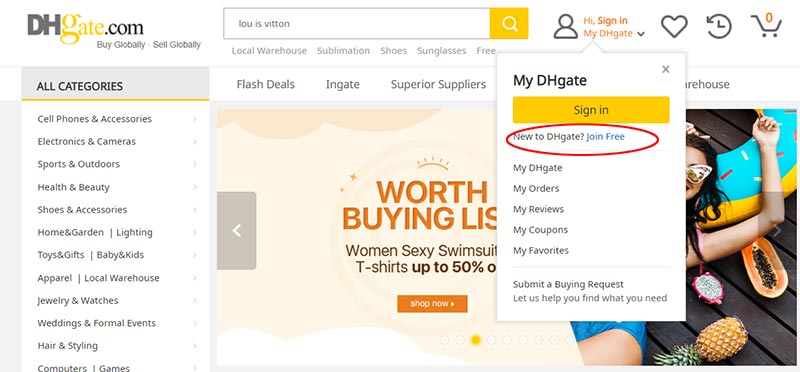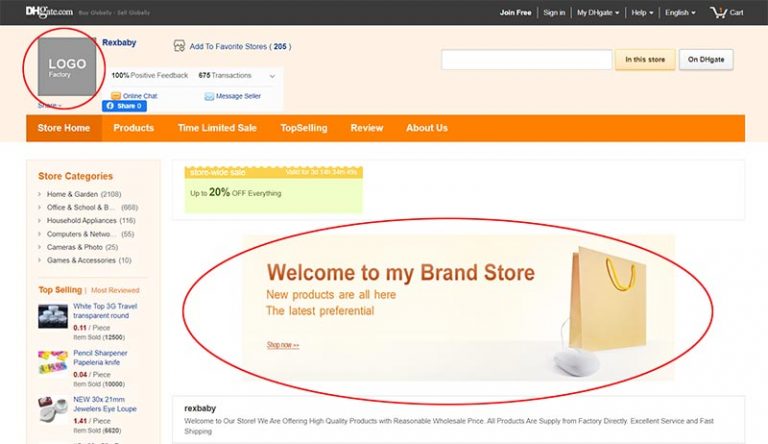Understanding the Risks of Online Shopping on DHgate
Online shopping on DHgate can be a convenient and cost-effective way to purchase products from Chinese manufacturers and suppliers. However, it also comes with its own set of risks. One of the most significant concerns is the potential for counterfeit products, scams, and unreliable sellers. In fact, many buyers have reported receiving fake or low-quality products, or even worse, not receiving their orders at all. To avoid falling victim to these scams, it’s essential to know how to tell if a DHgate seller is legit. Verifying a seller’s legitimacy before making a purchase can save you from a lot of hassle and financial loss in the long run.
According to DHgate’s own statistics, the platform has over 30 million products listed, and thousands of new sellers join the platform every month. While this provides buyers with a vast selection of products to choose from, it also increases the risk of encountering unscrupulous sellers. To mitigate this risk, DHgate has implemented various measures, such as its “Trusted Seller” badge and “Verified Supplier” certification. However, these measures are not foolproof, and buyers still need to exercise caution when shopping on the platform.
So, what can you do to protect yourself from potential scams and ensure a safe and successful shopping experience on DHgate? The first step is to understand the risks involved and take steps to verify a seller’s legitimacy. This includes researching the seller’s reputation, checking their feedback and ratings, and evaluating their product descriptions and images. By taking these precautions, you can significantly reduce the risk of falling victim to scams and ensure that you receive high-quality products from reliable sellers.
In the next section, we’ll discuss the common red flags to watch out for when evaluating a DHgate seller, and provide tips on how to identify suspicious seller behavior.
Red Flags to Watch Out for When Evaluating a DHgate Seller
When evaluating a DHgate seller, there are several red flags to watch out for that may indicate they are not legitimate. One of the most obvious signs is poor feedback and low ratings. If a seller has a low overall rating or a high number of negative reviews, it may be a sign that they are not providing good quality products or services. Additionally, if a seller is unresponsive to customer inquiries or has a history of ignoring customer complaints, it may be a sign that they are not committed to providing good customer service.
Another red flag to watch out for is a seller who is unwilling to provide detailed product information or images. If a seller is evasive or secretive about their products, it may be a sign that they are trying to hide something. Similarly, if a seller is using fake or misleading product images, it may be a sign that they are trying to deceive customers.
Other suspicious seller behavior to watch out for includes:
- Using fake or stolen product images
- Providing fake or misleading product descriptions
- Using high-pressure sales tactics to try to get customers to make a purchase quickly
- Refusing to provide refunds or exchanges
- Having a history of disputes with customers
By watching out for these red flags, you can significantly reduce the risk of falling victim to a scam or purchasing from an unscrupulous seller. In the next section, we’ll discuss the importance of researching a seller’s reputation on DHgate and provide tips on how to use DHgate’s built-in feedback system to evaluate a seller’s credibility.
How to Research a DHgate Seller’s Reputation
Researching a seller’s reputation on DHgate is a crucial step in verifying their legitimacy. One of the most effective ways to do this is by checking their feedback, ratings, and reviews. DHgate’s built-in feedback system allows buyers to leave feedback and ratings for sellers after a transaction is completed. This feedback can provide valuable insights into a seller’s reputation and help you determine if they are trustworthy.
To check a seller’s feedback and ratings on DHgate, follow these steps:
- Go to the seller’s store page on DHgate
- Click on the “Feedback” tab
- Read through the feedback and ratings left by other buyers
- Look for any red flags, such as low ratings or negative feedback
In addition to checking feedback and ratings, you can also research a seller’s reputation by reading reviews from other buyers. DHgate allows buyers to leave reviews for sellers, which can provide valuable insights into their reputation. To read reviews for a seller, follow these steps:
- Go to the seller’s store page on DHgate
- Click on the “Reviews” tab
- Read through the reviews left by other buyers
- Look for any red flags, such as negative reviews or complaints
By researching a seller’s reputation on DHgate, you can get a better sense of their legitimacy and trustworthiness. Remember to always be cautious when shopping online and to never make a purchase from a seller who has a poor reputation or a history of scams.
In the next section, we’ll discuss the importance of verifying a seller’s physical address and contact information to ensure they are a legitimate business.
Verifying a Seller’s Physical Address and Contact Information
Verifying a seller’s physical address and contact information is an important step in ensuring they are a legitimate business. A legitimate seller should have a physical address and contact information that can be verified through online directories and mapping tools.
To verify a seller’s physical address, you can use online directories such as Google Maps or Bing Maps. Simply enter the seller’s address into the search bar and see if it matches the address listed on their DHgate store page. You can also use online mapping tools to verify the location of the seller’s address and ensure it is a legitimate business location.
In addition to verifying a seller’s physical address, it’s also important to verify their contact information. A legitimate seller should have a working phone number and email address that can be used to contact them. You can test a seller’s contact information by sending them an email or giving them a call to see if they respond.
Here are some tips for verifying a seller’s physical address and contact information:
- Use online directories such as Google Maps or Bing Maps to verify a seller’s physical address
- Use online mapping tools to verify the location of a seller’s address
- Test a seller’s contact information by sending them an email or giving them a call
- Be wary of sellers who do not have a physical address or contact information listed on their DHgate store page
By verifying a seller’s physical address and contact information, you can ensure they are a legitimate business and reduce the risk of scams or disputes. In the next section, we’ll discuss the importance of evaluating a seller’s product descriptions and images to ensure they are accurate and trustworthy.
Evaluating a Seller’s Product Descriptions and Images
Evaluating a seller’s product descriptions and images is an important step in ensuring that you are purchasing a legitimate product from a trustworthy seller. A legitimate seller should provide accurate and detailed product descriptions, as well as high-quality images that show the product from multiple angles.
When evaluating a seller’s product descriptions, look for the following:
- Accurate and detailed product information, including specifications, materials, and dimensions
- Clear and concise language, free of grammatical errors and typos
- Realistic and honest product descriptions, without exaggerated or misleading claims
When evaluating a seller’s product images, look for the following:
- High-quality images that show the product from multiple angles
- Images that are clear and well-lit, without blurry or pixelated areas
- Images that accurately represent the product, without photo editing or manipulation
Be wary of sellers who provide low-quality or misleading product descriptions and images. This can be a sign that the seller is trying to deceive or mislead customers. Additionally, be cautious of sellers who use stock images or generic product descriptions, as this can indicate that the seller is not providing a unique or authentic product.
By carefully evaluating a seller’s product descriptions and images, you can ensure that you are purchasing a legitimate product from a trustworthy seller. In the next section, we’ll discuss the importance of checking for trusted seller badges and certifications on DHgate.
Checking for Trusted Seller Badges and Certifications
When shopping on DHgate, it’s essential to look for trusted seller badges and certifications that can indicate a seller’s legitimacy. DHgate offers several badges and certifications that can help you identify trustworthy sellers.
One of the most prominent badges on DHgate is the “Trusted Seller” badge. This badge is awarded to sellers who have consistently provided high-quality products and excellent customer service. To qualify for this badge, sellers must meet certain criteria, such as having a high feedback rating, responding promptly to customer inquiries, and providing accurate product descriptions.
Another certification to look for is the “Verified Supplier” certification. This certification is awarded to suppliers who have been verified by DHgate as legitimate and trustworthy. To qualify for this certification, suppliers must provide documentation and undergo a verification process to ensure they are a legitimate business.
Other badges and certifications to look for on DHgate include:
- “Top Rated Seller” badge: awarded to sellers who have consistently provided high-quality products and excellent customer service
- “Verified Product” badge: awarded to products that have been verified by DHgate as authentic and of high quality
- “DHgate Certified” badge: awarded to sellers who have undergone a rigorous verification process to ensure they are a legitimate business
By looking for these trusted seller badges and certifications, you can increase your confidence in a seller’s legitimacy and reduce the risk of scams or disputes. In the next section, we’ll discuss how to use DHgate’s built-in safety features to protect yourself from potential scams or disputes.
Using DHgate’s Built-in Safety Features
DHgate offers several built-in safety features that can help protect you from potential scams or disputes. One of the most important safety features is the “Escrow” payment system. This system allows you to pay for your order without releasing the payment to the seller until you have confirmed that you have received the order and are satisfied with it.
Another important safety feature is the “Buyer Protection” policy. This policy provides protection for buyers in case of disputes or issues with their orders. If you encounter any problems with your order, you can contact DHgate’s customer service team and they will work with you to resolve the issue.
To use DHgate’s built-in safety features, follow these steps:
- Make sure to use the “Escrow” payment system for all of your purchases on DHgate
- Read and understand the “Buyer Protection” policy before making a purchase
- Contact DHgate’s customer service team if you encounter any problems with your order
By using DHgate’s built-in safety features, you can significantly reduce the risk of scams or disputes and ensure a safe and successful shopping experience. In the next section, we’ll summarize the best practices for verifying a DHgate seller’s legitimacy and provide final tips and recommendations for avoiding potential pitfalls on DHgate.
Best Practices for a Safe and Successful DHgate Shopping Experience
To ensure a safe and successful shopping experience on DHgate, it’s essential to follow best practices when verifying a seller’s legitimacy. Here are some final tips and recommendations to keep in mind:
- Always research a seller’s reputation before making a purchase
- Check for trusted seller badges and certifications, such as the “Trusted Seller” badge or “Verified Supplier” certification
- Use DHgate’s built-in safety features, such as the “Escrow” payment system and “Buyer Protection” policy
- Verify a seller’s physical address and contact information to ensure they are a legitimate business
- Evaluate a seller’s product descriptions and images to ensure they are accurate and trustworthy
- Be cautious of sellers who have poor feedback, low ratings, or unresponsive customer service
By following these best practices, you can significantly reduce the risk of scams or disputes and ensure a safe and successful shopping experience on DHgate. Remember to always be vigilant and take the necessary steps to protect yourself when shopping online.
By understanding how to tell if a DHgate seller is legit, you can make informed purchasing decisions and avoid potential pitfalls. With these tips and recommendations, you’ll be well on your way to a safe and successful shopping experience on DHgate.








